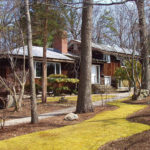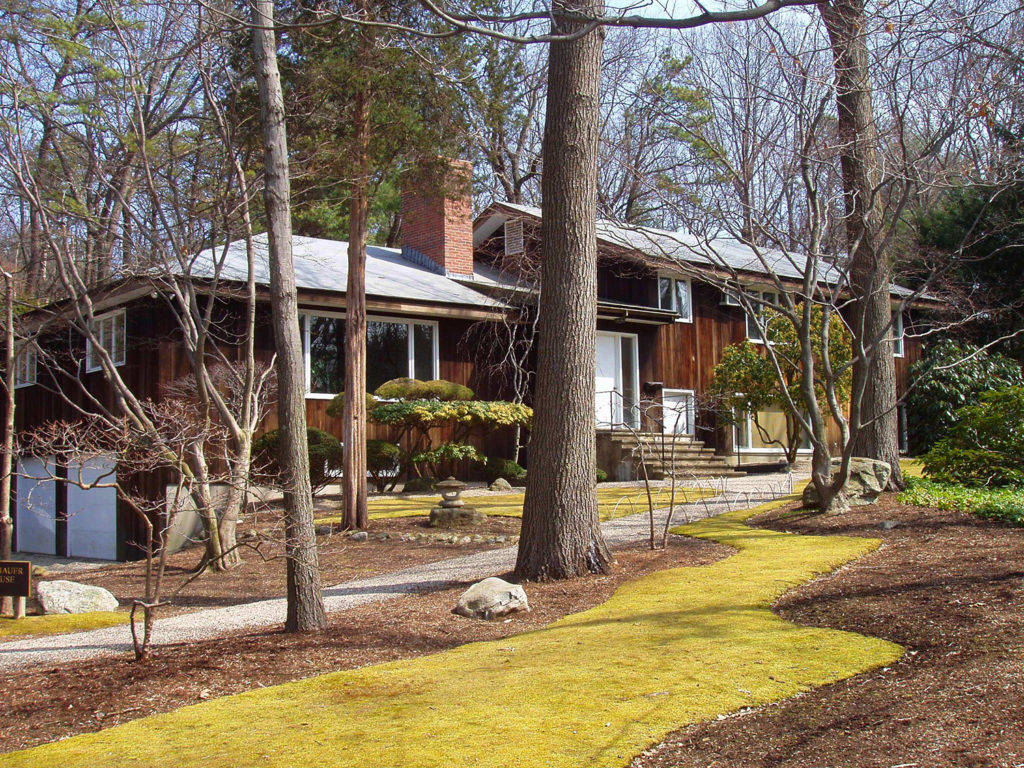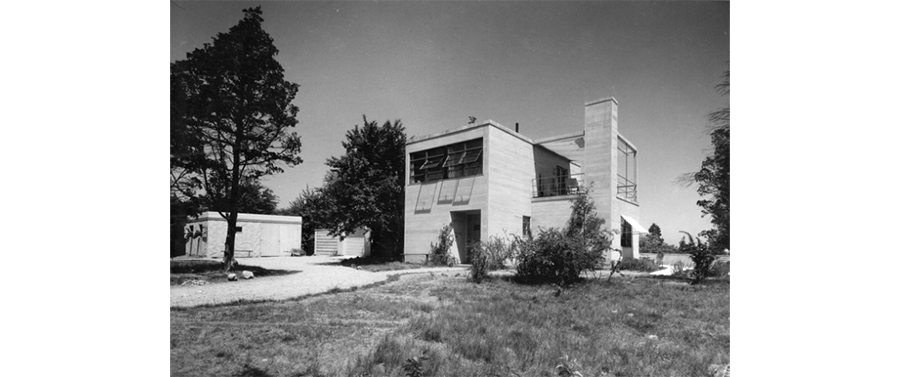
By Gary Wolf, FAIA
Belatedly learning of the demolition of the Edwin O. Reischauer Memorial House in Belmont was disappointing on two counts. First, because the residence/cultural center was under my radar. I had not known about it, even though my architectural practice was based in Belmont for four years, and I have worked on such nearby local landmarks as the Belmont Woman’s Club’s William Flagg Homer House. And second, because not only have I been active in historic preservation, but, even more specifically, I’ve been an advocate for preserving “the recent past”—buildings like the Reischauer House that date from the mid-20th century and that may seem too young to be historic, even though they may already have a place in history.
The Reischauer House appears to have been historically significant as the home of the eminent scholar, ambassador and author and his second wife, Haru, and also, later, as lodging for visiting scholars and as the site of annual symposia sponsored by the Edwin O. Reischauer Institute of Japanese Studies at Harvard. (Not to be confused with the Edwin O. Reischauer Center for East Asian Studies at Johns Hopkins!) The mid-century residence may also have had some interest as a structure that Ambassador Reischauer and Haru (a Japanese reporter and author) apparently designed together, which is said to have featured furnishings and memorabilia dating to their occupancy. A photo shows a two-part split-level house clad with dark-stained vertical siding, featuring an enormous chimney located across from the entrance. Its two-story block is topped with a low-pitched, overhanging gable roof that recalls the Techbuilt modular houses developed by architect Carl Koch following his legendary, early-modern experimental houses on Belmont’s Snake Hill Road.
This recent, unremarked demolition reminds us that it wasn’t many years ago in Belmont that the Belmont Hill School demolished the first modern house that was built in Massachusetts, the Rachel Raymond house. (See “Historic Modern Homes Are Hidden in Belmont,” Belmont Citizens Forum Newsletter, May/June 2005.) Located not far from the Reischauer house and designed for Rachel by her sister, pioneering woman architect Eleanor Raymond, the Raymond House was important for preceding Lincoln’s Gropius House by seven years in bringing the International Style to New England. The Raymond House’s destruction was mourned by many, including those who knew it because they followed the early development of modernism in the U.S. and those aware of the all-too-limited history of women in American architecture.
Even major buildings of the so-called “recent past” like the Raymond House are less “loved” and far more threatened than older historic structures. This is despite the fact that both the National Register of Historic Places and its Massachusetts equivalent make special provisions for buildings that have achieved significance in the past 50 years.
But while the Raymond House was familiar to many, the Reischauer House seems to have been little known or appreciated. That may not be a surprise, given that even major buildings of the so-called “recent past” like the Raymond House are less “loved” and far more threatened than older historic structures. This is despite the fact that both the National Register of Historic Places and its Massachusetts equivalent make special provisions for buildings that have achieved significance in the past 50 years. It remains a challenge to preserve notable examples of such architecture, and preservationists have legitimate concerns that decades of our history are being erased by demolition.
Nevertheless, some local residents appreciated the Reischauer house. A list of five “Points of Interest” for kids in Belmont that can be found on the internet includes the Reischauer Memorial House as one those select attractions (see kids.kiddle.co/Belmont,_Massachusetts). And in 2012, the Belmont Citizens Forum and the Japan Society co-sponsored two visits to the house and the nearby Habitat Education Center and Wildlife Sanctuary. In invitations for the walks, the BCF noted that, aside from its connection with Reischauer, “It is the only private residence in the US where the Japanese Empress and Emperor ever spent a night and it is an intriguing attraction for Japanese and those interested in cross-cultural awareness.”
I regret never having visited the Reischauer House to learn its history and to assess its personal design, and hope that the home’s historic furnishings—and perhaps even the architectural drawings—have been preserved. Perhaps the lesson of the loss of these two houses is for residents to be alert to the continuing threats to the town’s 20th-century history, as well as to its earlier structures, and to take measures now to assess the buildings that remain in order to protect those deemed worthy of preservation.
Gary Wolf is the founding principal of Wolf Architects, Inc., in Boston, and the acting president of Docomomo/New England, the local chapter of an international organization that advocates for the preservation of modern architecture.




Sorry, the comment form is closed at this time.